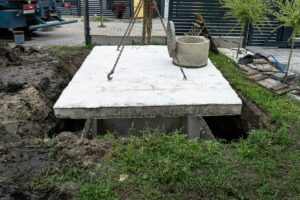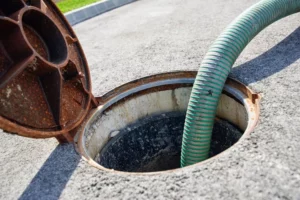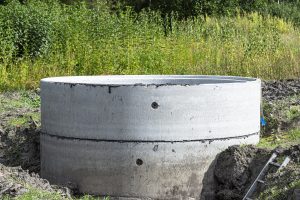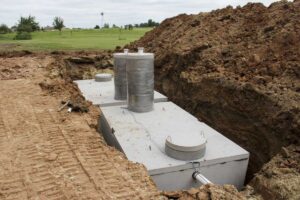When it comes to reliable and effective wastewater management, especially in areas with challenging soil conditions, the mound system is a proven solution. For homeowners and businesses in Monroe, professional mound system services ensure your septic needs are handled with care, precision, and compliance with local regulations.
Introduction to Mound Systems
Mound systems are an innovative solution for wastewater treatment, particularly in areas where traditional septic systems are prone to failure due to challenging soil conditions. These systems are ideal for locations with extremely permeable or impermeable soils, shallow cover over porous bedrock, or high water tables. Designed to treat wastewater effectively, mound systems consist of three main components: a septic tank, a pump chamber, and the mound itself.
The septic tank is the first stop for wastewater from the home. Here, heavy solids settle to the bottom, forming sludge, while lighter materials like grease and oils float to the top, creating a scum layer. The partially treated wastewater, known as septic tank effluent, then moves to the pump chamber. The pump chamber plays a crucial role in moving the effluent to the mound, where further treatment occurs. The mound, an elevated structure filled with sand and gravel, filters and treats the effluent before it disperses into the natural soil. This engineered approach ensures that wastewater is treated effectively, even in less-than-ideal soil conditions, providing a reliable solution for homeowners and businesses in Monroe.
What is a Mound System?
A mound system is a specialized type of septic system designed for properties where the soil is not suitable for traditional systems. Whether due to high groundwater levels, shallow soil depth, or poor permeability, a mound system uses an elevated sand and gravel bed to treat wastewater effectively before it disperses into the ground.
This engineered solution consists of three key components:
- Septic Tank: Collects and begins breaking down wastewater.
- Pump Chamber: Moves the effluent from the tank to the mound.
- Mound: An above-ground structure filled with sand and gravel that filters and treats the effluent before it returns to the soil.
For property owners in Monroe, this system provides peace of mind, knowing that wastewater is being processed safely and efficiently, even in less-than-ideal ground conditions.
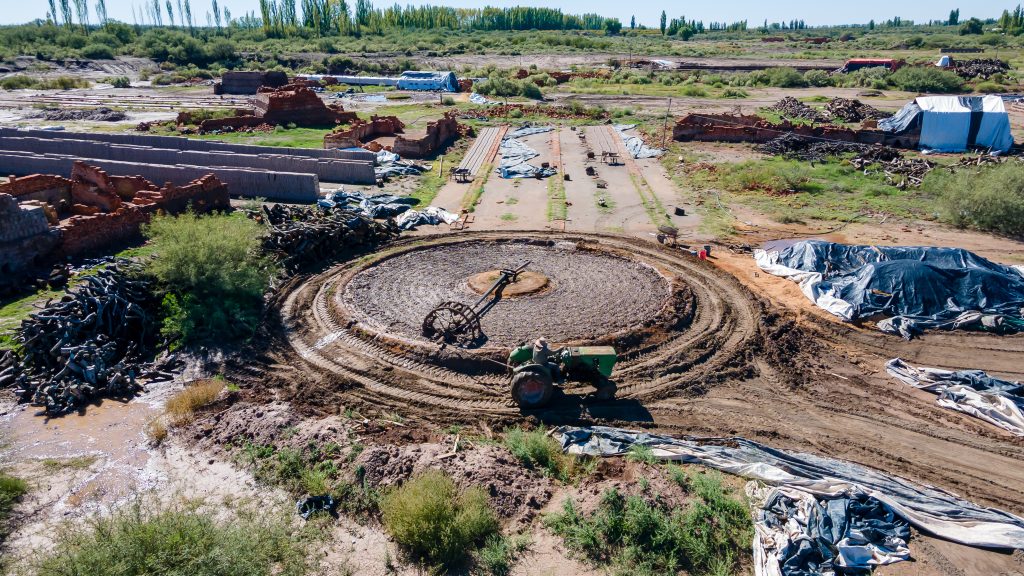
Mound System Components
A mound system is composed of several critical components, each playing a vital role in the treatment process. The septic tank, typically made of concrete, fiberglass, or polyethylene, is a large, dual-chambered container buried underground. It collects wastewater from the home, allowing solids to settle and lighter materials to rise, creating a separation that facilitates initial treatment.
Next is the pump chamber, another essential component made from similar durable materials. This chamber collects the septic tank effluent and houses the pump, pump control floats, and a high water alarm float. The pump is responsible for moving the effluent to the mound in controlled doses, ensuring even distribution.
The mound itself is an above-ground drainfield constructed with a specific sand fill material. Within the mound, a gravel-filled bed contains a network of small diameter pipes. These pipes distribute the effluent under low pressure through small holes, allowing it to trickle downward through the gravel and sand. As the effluent moves through these layers, it undergoes further treatment before reaching the natural soil. This multi-layered approach ensures that the wastewater is effectively treated, protecting the environment and maintaining system efficiency.
Septic Tank Considerations
Selecting the right septic tank is crucial for the effective operation of a mound system. The tank must be appropriately sized to handle the volume of wastewater generated by the household. Additionally, the type of tank should be suitable for the specific soil and site conditions. A well-sized and properly installed septic tank ensures that the system functions efficiently and reduces the risk of failure.
A key feature of a well-designed septic tank system is the dosing chamber. This chamber allows for the controlled release of septic tank effluent into the mound, ensuring even distribution and effective treatment. Another critical component is the high water alarm float, which alerts homeowners to potential issues such as overflows or system malfunctions. Regular maintenance, including pumping the septic tank every 3-5 years, is essential to prevent buildup of solids and ensure the system operates smoothly. By addressing these considerations, homeowners can maintain a reliable and efficient wastewater treatment system.
Professional Mound System Installation in Monroe
Proper mound system installation is crucial for ensuring long-term performance and environmental safety. Monroe residents rely on experienced professionals to design and install these systems according to site-specific needs and regulations.
Key benefits of expert installation include:
- Site Evaluation: Professionals assess your soil composition, property layout, and water table levels.
- Custom Design: Tailoring the mound system to your property’s unique characteristics.
- Permits and Compliance: Ensuring all Monroe and state regulations are met.
- Quality Materials and Craftsmanship: Using durable, approved materials and expert construction techniques.
Site Preparation and Construction
Proper site preparation and construction are fundamental to the success of a mound system. The process begins with clearing the site of any debris, trees, or stumps, and compacting the soil to prevent future settling. Using a chisel plow or similar equipment, the soil should be loosened to a depth of 7-8 inches to promote proper drainage and integration with the mound.
The construction of the mound involves using a specific sand fill material that meets regulatory requirements. A gravel-filled bed is then installed within the mound, featuring a network of small diameter pipes laid out in a precise pattern. This layout ensures uniform distribution of the septic tank effluent across the bed. Once the pipes are in place, the mound is covered with a layer of soil and planted with grass to prevent erosion and enhance the system’s aesthetic integration with the landscape.
Attention to the water table and limiting layer is crucial during construction. These factors determine the depth and placement of the mound, ensuring that the wastewater is treated effectively before it reaches the natural soil. By following these steps, homeowners can ensure their mound system is built to provide reliable and efficient wastewater treatment.
Managing Septic Tank Effluent
Effective management of septic tank effluent is key to the proper operation of a mound system. The effluent should be pumped to the mound in controlled doses, ensuring even distribution throughout the bed. As the effluent moves through the sand and into the natural soil, it undergoes further treatment, reducing the risk of groundwater contamination.
Regular maintenance is essential to prevent system failure. This includes routine inspections and pumping the septic tank to remove accumulated solids. Homeowners can also take proactive steps to reduce the risk of backups and system malfunctions. Using lighter weight toilet paper, installing baskets or screens on drains, and running plenty of water when using a garbage disposal can help maintain system efficiency. Additionally, avoiding the use of powdered soaps, not flushing feminine products or paper towels, and ensuring all outside drain caps are secure can further protect the system.
By following these guidelines and maintaining the system properly, homeowners can ensure their mound system operates effectively, providing reliable wastewater treatment and protecting the environment.
Common Signs You Need Septic Mound Repair
Over time, even well-installed mound systems can require maintenance or repair. Monroe homeowners should watch for these warning signs:
- Slow Drains: Sluggish water drainage from sinks, showers, or toilets.
- Unpleasant Odors: Sewage smells around the mound area.
- Wet or Spongy Areas: Excess moisture around the mound can indicate saturation or leaks.
- Backup Issues: Water backing up into the house is a clear sign of a system issue.
Prompt septic mound repair can prevent costly damage and protect both your property and the environment. Skilled technicians can diagnose problems quickly, from clogged pipes to pump malfunctions, and provide effective solutions to restore your system’s function.
Benefits of Maintaining Your Mound System
Routine inspections and timely repairs keep your mound system running efficiently. Monroe residents enjoy several benefits by maintaining their systems properly:
- Extended System Lifespan: Regular care can add years to your system’s life.
- Environmental Protection: Prevents contamination of groundwater and local ecosystems.
- Cost Savings: Early repairs help avoid expensive system replacements.
- Peace of Mind: Confidence that your wastewater is being handled safely.
Why Monroe Homeowners Trust Donaven’s Septic Solutions
At Donaven’s Septic Solutions, we understand the unique challenges of mound systems in Monroe. Our team brings years of experience, local knowledge, and a commitment to quality service. From initial site evaluations to full-scale mound system installation and septic mound repair, we ensure your system operates at peak performance.
We proudly serve Monroe and surrounding areas, helping homeowners navigate septic regulations while providing top-notch craftsmanship and customer care.
Ready to Install or Repair Your Mound System in Monroe?
If you’re considering a mound system installation or need expert septic mound repair in Monroe, trust the professionals at Donaven’s Septic and Plumbing. With years of hands-on experience, their team delivers reliable, code-compliant solutions tailored to your property’s needs.
Contact Donaven’s Septic and Plumbing today to schedule a consultation and ensure your Monroe property’s wastewater management system is in expert hands.

